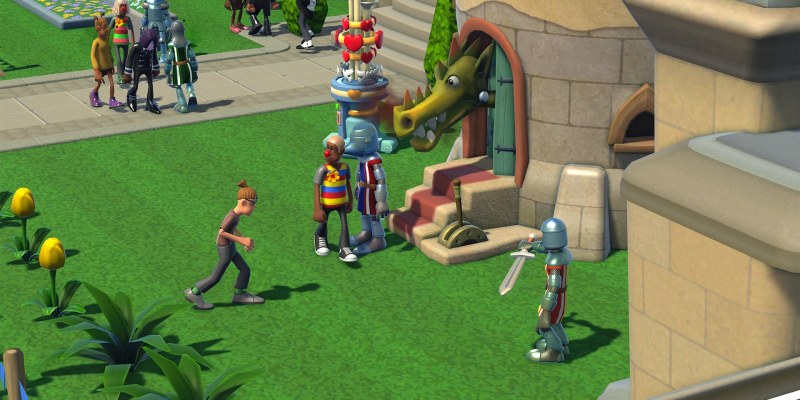Two Point Campus is a delightful oddity. Publisher Sega and developer Two Point Studios are giving you the ability to manage and grow your own college campus with a Saturday morning cartoon-like vibe. It’s an atmosphere where gun violence doesn’t exist, but there is the occasional Harry Potter-style malevolent wizard who will rain down a meteor shower. The game provides a layered simulation experience, yet it’s simultaneously off-the-rails goofy. I spent 11 hours digging into Two Point Campus for preview on PC, and while it has some quirks to work out, I wish I could have played even more of it.
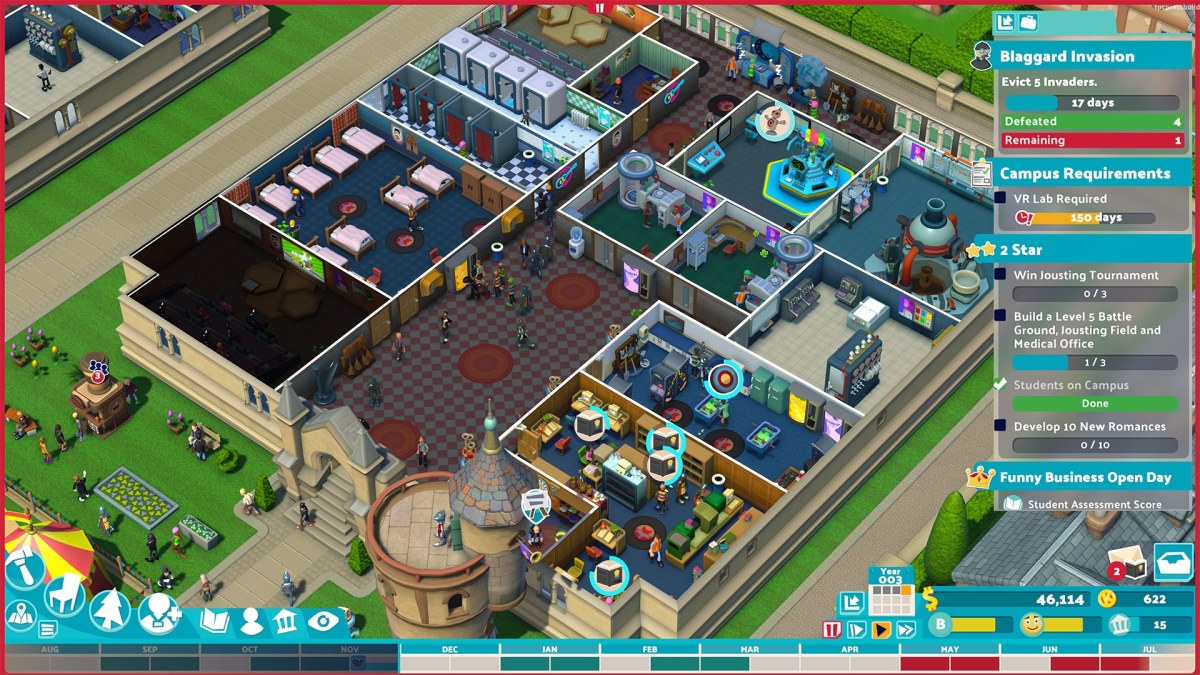
Newcomers Welcome at This Campus
Although I ostensibly enjoy simulation games, I think the only ones I’ve ever actually played are versions of SimCity and The Sims. So, I can’t really compare Two Point Campus to other popular management sims or even to its predecessor, Two Point Hospital. I can confidently say the game is easy for lapsed players or newcomers to the management sim genre to get into though.
I had access to four levels of Two Point Campus for preview, with each one gradually introducing new mechanics and complexities. The first level is basically just a tutorial, in that it only requires you to complete a few simple goals and provides a monstrous amount of money with which to achieve them. After playing through the first couple simple levels, I felt like I understood the central aspects of the game.
However, there is definitely a learning curve to overcome. For instance, one would think purchasing an item and dropping it into a room would be simple, but it’s actually more complex than it sounds because each type of room has restrictions on which items can be placed in it. If you don’t enter the item-purchasing menu in the right context, you won’t be able to do what you want to do. The same is true of trying to build new space onto existing rooms. I was a little frustrated at first when I didn’t understand why the game wasn’t letting me do some simple things, but once I finally wrapped my head around the nuance of menu navigation, it all became second nature.
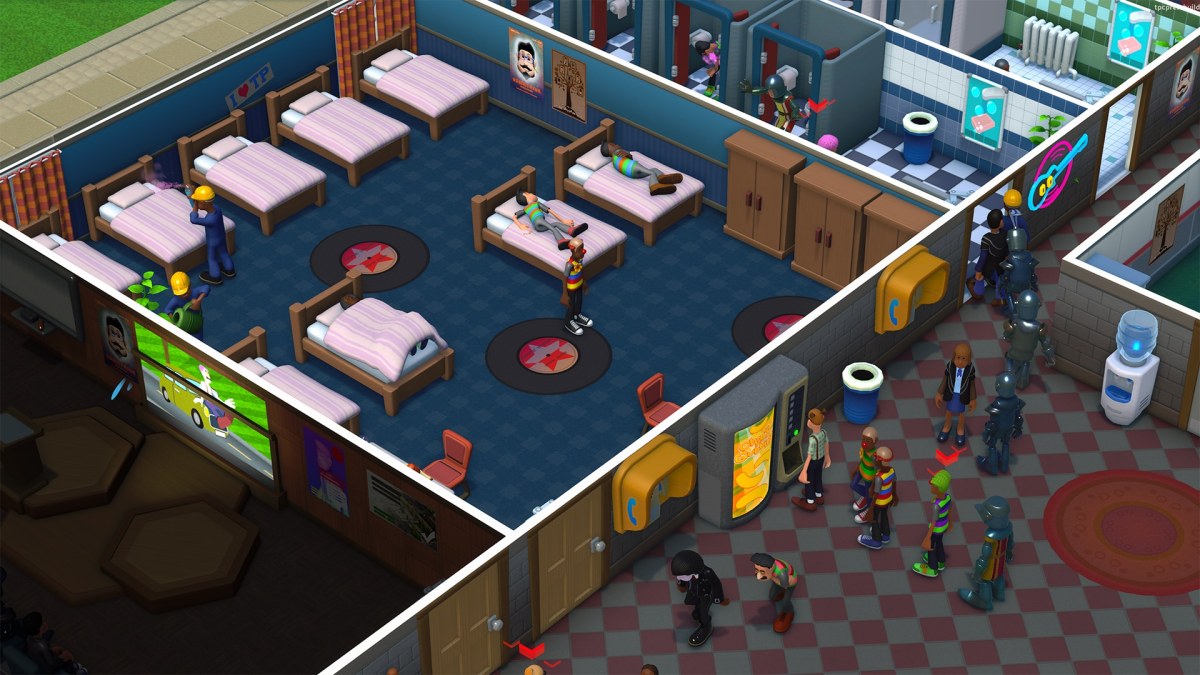
The simulation experience itself isn’t especially hardcore in its realism either, for better or worse. For example, you don’t have to worry about things like utility bills. Your only recurring expense seems to be staff wages, unless you’ve taken out a bank loan you need to pay off. You collect tuition fees and rent on a monthly basis, (Isn’t it a bit odd to collect tuition every month? No?) and you can get money bonuses by helping individual students with specific academic requests they bring to you. It’s a somewhat weird and simplistic foundation, but it does at least make Two Point Campus more approachable.
Now You Have to Put in All the Work
Running a college campus is a lot of work. First, you have to build the most essential rooms — things like dorms, a bathroom, a shower room, and classrooms pertaining to specific courses. Then you have to build rooms that will keep people entertained and rested, like a recreation room or a staff lounge. Later on, you will build even more specialized rooms, like a room for treating injuries (or… hexes) or a research room where teachers can gradually unlock new items for you to purchase.
As your campus grows, you will attract more students, meaning you will have to hire more staff (each with their own unique stats) and expand the school. This becomes a cyclical process, and your campus will ultimately become a spider web of increasing obligations. It is really satisfying to sit back and admire what you have created though.
To unlock a new level in Two Point Campus (presuming you aren’t just playing in the Sandbox mode), you have to complete at least the first set of major tasks the game presents to you. These tasks might involve things like maintaining a certain student grade average, maintaining a comfortable temperature in rooms on campus (which is weirdly satisfying to achieve), and leveling up your overall campus to an advanced degree.
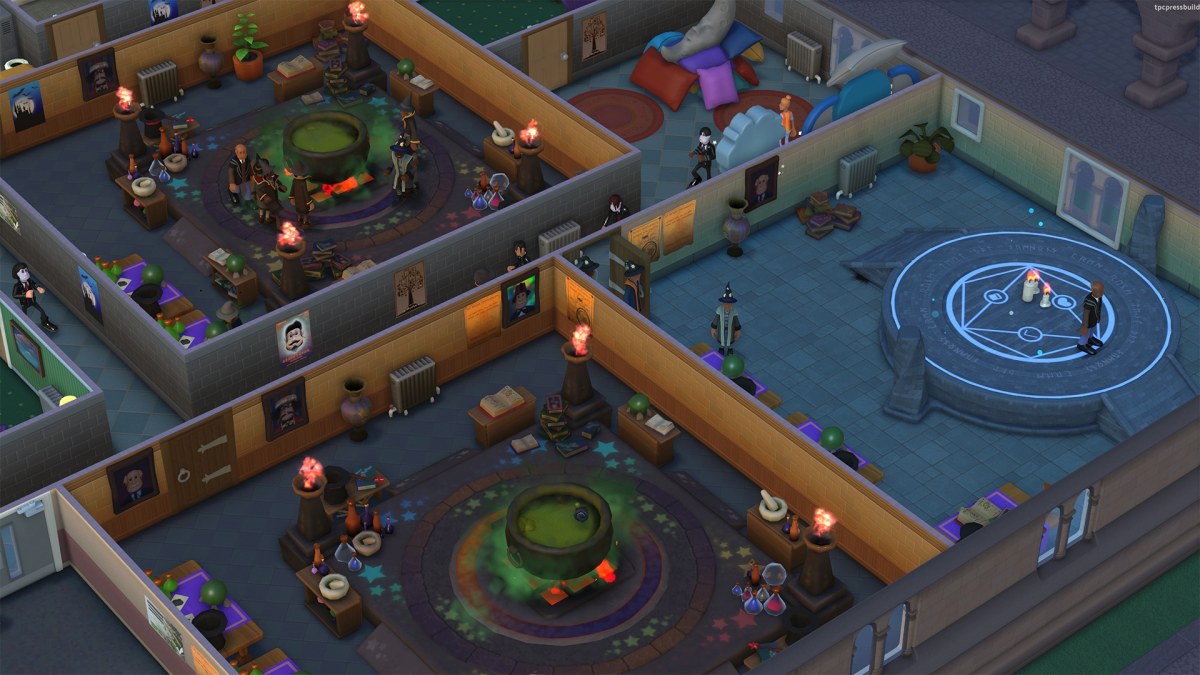
Completing the first set of tasks in a given level wasn’t overly difficult — though I did almost go broke during the third level, a school themed around knights and castles. I didn’t have time to try to complete the more advanced subsequent tasks, but I get the feeling that maintaining a campus once it really balloons in size could be pretty challenging. And the fact that it takes a total novice like me around a dozen hours to complete just the first part of four levels suggests the final game will have a long playtime across its 12 levels. In other words, this should be a meaty experience.
There is a vast multitude of different items to purchase, many of which must first be unlocked by spending a special currency earned from playing the game well. They are fun to look at, and indeed, the game’s visuals are vibrant, cute, and imaginative across the board. The game also clearly states which stats (if any) the items will affect.
However, the game doesn’t explain to what degree that items are useful or if, for example, there is a penalty for putting more than one of the same poster in a room to increase its “attractiveness” stat. Right now, there’s no way to know if some items are inherently more useful than others or if it’s okay to drop the same potted plant in every room. I hope Two Point Studios will do something to more clearly delineate utility from aesthetics with items, because I felt under-motivated to unlock items when I didn’t fully understand their value. It would also be nice if the item search function were made more robust, to make it easier to find items that address a specific stat.

Two Point Campus Classes Are Zany… on Paper
One of the features Two Point Campus most loves to flaunt in trailers is its unorthodox student courses, like gastronomy, knight school, and wizardry. Students will dress up according to their major, and the fourth level, which gleefully rips off Harry Potter, has tons of budding wizards walking around. There are also assorted extra things you can build or buy to support these classes, and many of the most novel ones I saw belong to knight school. You can create an area for jousting, or you can research to build a giant tower that has a freakin’ dragon in it. It all looks really cool, and there are some funny animations!
However, the differences between courses appear to be largely superficial. I didn’t have to approach building wizardry classes any differently than I did scientography classes. Perhaps that changes when you get really deep into the game, but in what I could preview of Two Point Campus, the courses just didn’t matter that much to gameplay.
It gets back to my primary issue with Two Point Campus in preview — I can’t always tell what aspects of its design are there to enrich gameplay and which are there to just be ornamental. But I can’t be overly judgmental at this point, since I truly feel like I only scratched the surface of everything the game has to offer. I’ve also neglected to mention many other little aspects of the simulation gameplay for the sake of brevity, so I don’t want to undersell how many intricate moving pieces the game has.
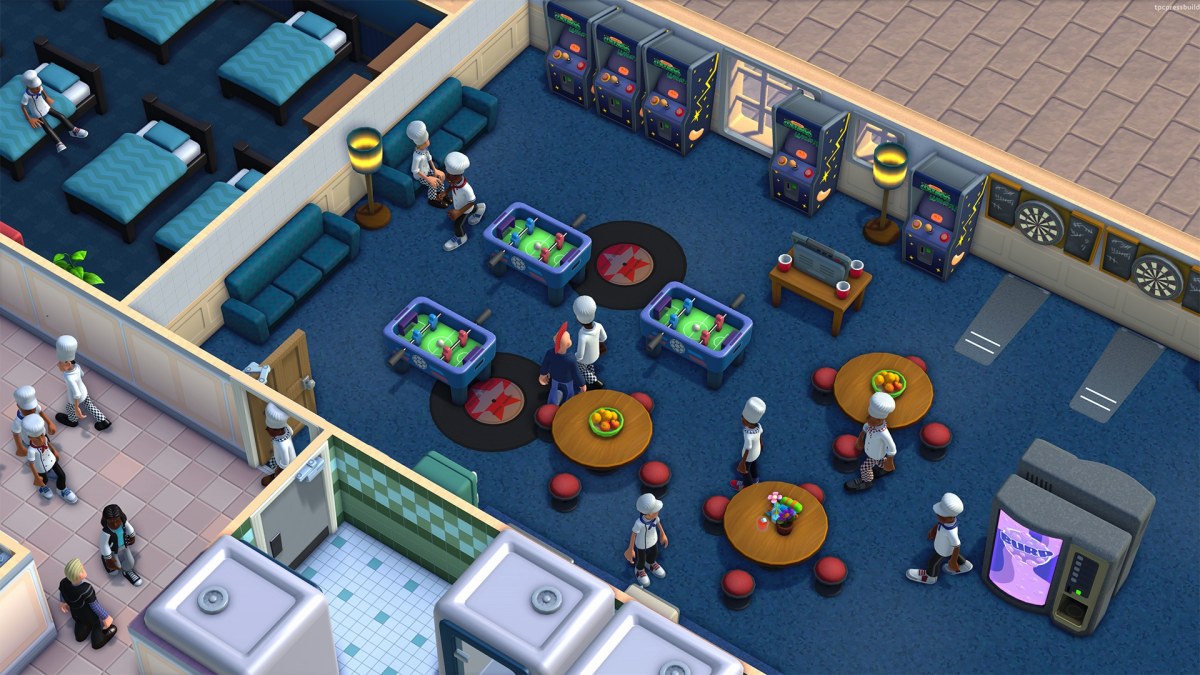
And the truth is, despite my qualms here and there, I just had a ton of fun with Two Point Campus in preview. The game is breezy, bright, and peppered with funny dialogue and voice acting. There are definitely things that could be improved, but even if nothing is improved, this is a game I could happily play all day long if I had no other obligations. At the end of the day, that’s really the only test a management sim like Two Point Campus has to pass.
Two Point Campus launches on Nintendo Switch, PlayStation 4, PlayStation 5, Xbox One, Xbox Series X | S, Xbox Game Pass, and PC on August 9, 2022.
